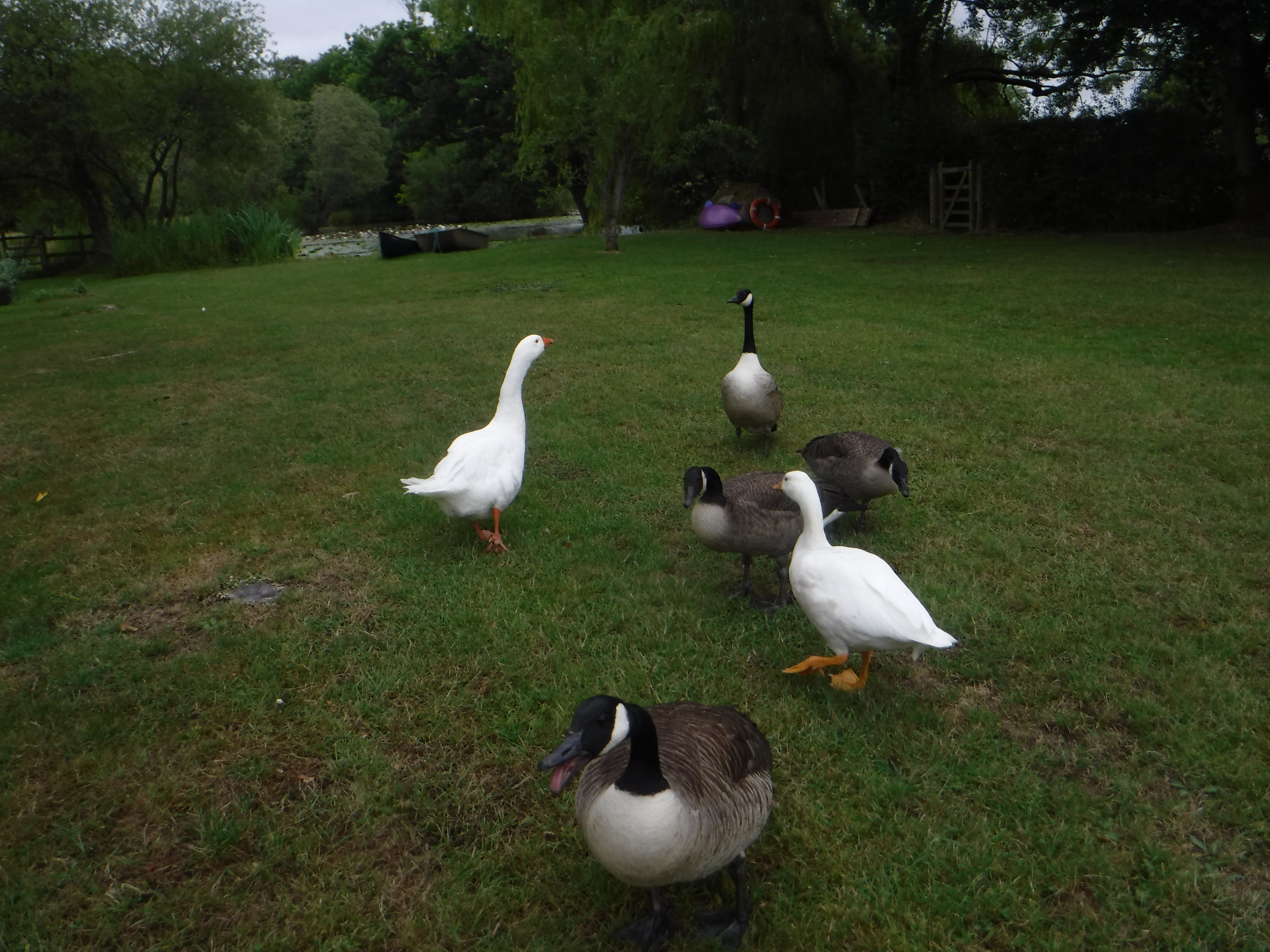
Total monthly rainfall: 48 millimetres. Maximum daily rainfall: 16.5 mm (8th July). There were 11 days with total cloud-cover for at least part of the day. Maximum temperature on the hottest day was 33°C on July 31st. Maximum temperature on the 7 coldest days was 19°C. The remaining 23 days were fairly evenly matched at between 20 and 25°C. As summer is a season of high evaporation and transpiration, the moderate rainfall proved insufficient to prevent pond-water falling to extremely low levels. Strong winds overnight on 3rd/4th July brought down a squirrel drey in a big bundle on the woodland floor. Perhaps it took revenge by strip-barking a 30 year old ash tree on the 9th.
This month we spotted nine new wild-flowers in bloom, bringing our annual total so far to 64. Agrimony bloomed in the meadows on the 3rd, with ragwort first appearing beside the lake on the 8th. Next day, on the 9th, three flowers appeared – marsh woundwort in low-lying parts of the fields, fleabane in the meadows, and knapweed among the fleabane and thistles. Since knapweed is as popular to insects as thistles, this allows us to start topping and cutting thistles to prevent seeding. On the 13th, red bartsia began flowering near the lake, while water-mint commenced flowering on its banks. Bristly oxtongue, another prolific flower we have to control, appeared on the 20th – while a stone parsley in a meadow on the 22nd completed our tally for the month.
-
 Ash tree ring barked by squirrels
Ash tree ring barked by squirrels
Ash tree ring barked by squirrels
Ash tree ring barked by squirrels
-
 Geese before departure
Geese before departure
Geese before departure
Geese before departure
-
 Lizard on flowerpot
Lizard on flowerpot
Lizard on flowerpot
Lizard on flowerpot
-
 Pre-flight brown hawker at woodland pond
Pre-flight brown hawker at woodland pond
Pre-flight brown hawker at woodland pond
Pre-flight brown hawker at woodland pond
-
 Ringlet butterfly
Ringlet butterfly
Ringlet butterfly
Ringlet butterfly
https://www.kentfieldclub.org.uk/news/little-barton-farm-wildlife-notes/nature-notes-july-2020#sigProIdda48ed589e
A first- sighting of the gatekeeper on bramble (2nd July) and a ringlet butterfly in our woodland ride on July 6th brought our annual butterfly sightings to 20 for the year so far. We have not yet seen a silver-washed fritillary or purple hairstreak, and are still awaiting painted ladies.
The six-spot burnet moth began to appear in our woodland ride on the 3rd, and there were plenty of repeat sightings of other moth species, but no new ones, so our total rises to 28 for the year.
Three more dragonfly species appeared this month, bringing our total to 17 species. On July 1st we saw a brown hawker patrolling the lake on a sunny morning. On the 20th, our first willow emerald appeared on a goat willow beside a woodland pond, and on July 26th the first migrant hawker appeared alongside our wood. This brings our running total to 17 so far.
The only wild bird first-sighting this month is the secretive tree-creeper on July 27th. Instinctively, because of our fauna and land management methods, we know that this is one of our resident birds, but we can go well over a year without seeing one because of its habit of “creeping” up the trunks of oak trees, which can be covered with growths, ivy, and thick bark. A quiet approach is essential, and usually a long wait on a well-placed bench.
You may remember that our remaining white domestic gander mated with a Canada goose, and, together with its wild mate, reared 7 goslings. Attacking crows quickly reduced them to three, and these - one of which was white, reached full maturity. On July 11th, they were joined by five more Canada geese, which all flew off together leaving a very forlorn gander honking for the remainder of the day and night. To our surprise, at 6pm on July 13th, eleven Canada geese, including his white offspring, made a noisy return, but departed again at 7.30pm. This process was repeated periodically throughout the month with up to 18 Canada geese present. It would be nice to know where a flock of Canada geese, including one which was pure white, visit after they leave us.
We discovered a crab spider ambushing a meadow brown butterfly on a thistle on July 2nd; and our grand-daughter spotted a glow-worm on our front path after dark on the 5th. Next night on the 6th, our family discovered 29 glow-worms around the property, and finally we saw our first ripe blackberries on the 28th.

